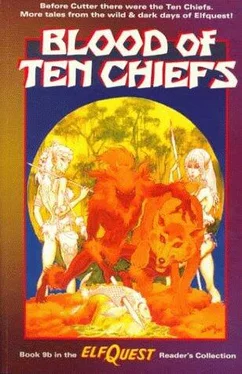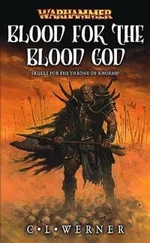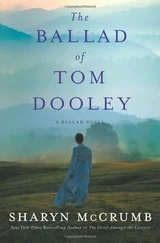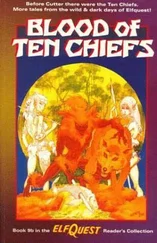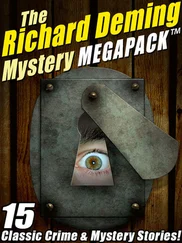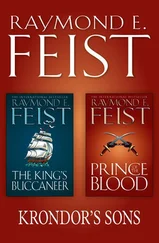Richard Pini - The Blood Of Ten Chiefs
Здесь есть возможность читать онлайн «Richard Pini - The Blood Of Ten Chiefs» весь текст электронной книги совершенно бесплатно (целиком полную версию без сокращений). В некоторых случаях можно слушать аудио, скачать через торрент в формате fb2 и присутствует краткое содержание. Год выпуска: 1986, ISBN: 1986, Издательство: A TOR Book, Жанр: Фэнтези, на английском языке. Описание произведения, (предисловие) а так же отзывы посетителей доступны на портале библиотеки ЛибКат.
- Название:The Blood Of Ten Chiefs
- Автор:
- Издательство:A TOR Book
- Жанр:
- Год:1986
- ISBN:0-812-53043-8
- Рейтинг книги:3 / 5. Голосов: 1
-
Избранное:Добавить в избранное
- Отзывы:
-
Ваша оценка:
- 60
- 1
- 2
- 3
- 4
- 5
The Blood Of Ten Chiefs: краткое содержание, описание и аннотация
Предлагаем к чтению аннотацию, описание, краткое содержание или предисловие (зависит от того, что написал сам автор книги «The Blood Of Ten Chiefs»). Если вы не нашли необходимую информацию о книге — напишите в комментариях, мы постараемся отыскать её.
The Blood Of Ten Chiefs — читать онлайн бесплатно полную книгу (весь текст) целиком
Ниже представлен текст книги, разбитый по страницам. Система сохранения места последней прочитанной страницы, позволяет с удобством читать онлайн бесплатно книгу «The Blood Of Ten Chiefs», без необходимости каждый раз заново искать на чём Вы остановились. Поставьте закладку, и сможете в любой момент перейти на страницу, на которой закончили чтение.
Интервал:
Закладка:
ElfQuest - 01 - The Blood Of Ten Chiefs
Introduction and Editor's Note by Richard Pini
Riding the train from Poughkeepsie to Grand Central Terminal and back is not one of life's Great Events, even if it does pass near co-editor Lynn Abbey's ancestral home of Peekskill. (I particularly dislike the lemminglike change of trains at Croton-Harmon. How those who make that four-hour-total commute five days a week do so absolutely escapes me; I content myself with the knowledge that Tantalus is not alone in hell.) Even the generally amusing reporting antics of the New York Post wear thin after about fifteen minutes, and then it's stare-out-the-grimy-windows time once again.
However, on Thursday, April 17, 1986 I had a reprieve from the usual Metro North ennui, and what a lovely reprieve it was. I got to read, for the first time all collected in one place, the manuscript for this book, volume one in the series collectively called The Blood of Ten Chiefs. And a faster four hours I've never spent.
The Blood of Ten Chiefs owes its genesis to two literary parents: one is the very successful series of graphic stories known en masse as Elfquest, created by far-too-talented-for-the-likes-of-me and very patient wife Wendy and myself in 1977; the other is the construct known as the "shared-universe anthology," the creation of which is generally credited to the far-too-talented-etc, team of Robert Asprin and Lynn Abbey with their Thieves' World collections, begun in 1978. (So what is my function among all these far-too-talented people? I exploit. It's an ancient and honorable profession.)
About Elfquest, more in a bit. About Thieves' World and the Asprin-Abbey alliance: We (Wendy and I) have known them (Bob and Lynn) for a bunch of years. We met, more or less, in the bar at a science-fiction convention, which is one of the most open-door inside jokes there is. We got to talking about this and that and books and comics and publishing; I think that it took all of about ten minutes for us to start proposing deals to each other and to come up with ideas for new and progressively more outrageous projects. As it turns out, Bob and I talk the same language. Different accents, but definitely the same language. They were already involved with Thieves' World; we were already involved with Elfquest.
I won't bore anyone with the strange and convoluted intricacies of how a massive project like Thieves' World (and, by extrapolation, all such anthologies) came to be; Bob has written a very entertaining essay on that subject in the first TW volume. Find it, buy it, read it, and be enlightened. However, there is at least one major difference between The Blood of Ten Chiefs and Thieves' World—in fact between TBOTC and every other shared-universe anthology I know of. And that difference is that while the various characters who inhabit Sanctuary, the central TW city (I must fall back on initials, else I'll go crazy), may roam all over the landscape, they are still rooted solidly in a single time period. One character can stumble across another in an alleyway, for example. But in the world of Elfquest, the history of the ten chiefs of the title spans approximately ten thousand years. Since ascendancy to chiefhood is by bloodline succession, chief number one probably doesn't have too much to say to chief number eight. Maybe.
I know. Time out. Just who are these chiefly characters, anyway?
As I mentioned a bit earlier, all of these stories are based on and in the storyworld called Elfquest, which takes place on the physical planet which we've named the World of Two Moons (which name, I hope, needs no explanation). The first chapter of the original quest saga was written and illustrated in 1977; the tale concluded with the publication of chapter twenty in late 1984. Since then, that original story has seen publication in a variety of incarnations: as comics, as handsome collected volumes, as a novelization. All quite successful. The main character was (and is; we're not finished by a long shot!) named Cutter, Blood of Ten Chiefs, and we alluded very briefly in the comics series to the line of Cutter's forebears that stretched back into misty and half-forgotten history. Readers and fans being who they are, bless them, quickly made it known to us that they wanted to know more about these shadowy characters.
By the way, and in case there is any question, Cutter and his kin and tribe-mates are elves.
About elves. There are those creative people out there who will staunchly maintain that they know all about who elves are and what these creatures are supposed to be and act like. These tale-spinners, for the most part, have written stories about elves and maintain that if it doesn't look and act like the beasties they've chronicled, then it ain't elves. Well, I say it's spinach.
Elfquest elves have exactly two things in common with most of the haute elves populating much of what passes for fantasy these days: their ears, which are pointed. Other than that, the transplanted (for they are not native to this place) denizens of the World of Two Moons adhere to none of the well-known, well-used conventions concerning the little people. No polysyllabic, tongue-twisting names, no effete mannerisms, no thees and thous, no enchanted swords, stones, gems, or other paraphernalia, and no unicorns. Sensuality, yes—of a most real and earthy nature, for the elves of these stories are primal spirits who know how to love the here and now. Magic, yes—but of a natural kind that comes from within, from the mind and heart rather than the supernatural. The naming of names, yes—but names which are won from the land and the struggle to survive in it, names that carry their weight in blood and pride. And lagniappe: our elves are allied with and ride wolves, because wolves are the most magnificent social animals we know, and what better?
(At this point I would be remiss if I didn't suggest to those folk curious about the original Elfquest saga that they find Books One through Four at fine bookstores everywhere and give them a perusal. The rich story and accompanying background isn't absolutely necessary to the enjoyment of these tales, but what's mashed potatoes without gravy?)
So one day, about two years ago, Wendy and I were wondering how we might fulfill the readers' wishes for more information on the ten chiefs, and we came up with the idea of a storybook: ten stories, ten vignettes from each life. We'd write the stories ourselves, and perhaps even publish the book ourselves. We mentioned this to Bob and Lynn, who grinned impishly, and suggested, "Why not do it as a continuing anthology, like Thieves' World, just to pick an example from thin air. We'll even help with the authors and the editing."
I said, "That's a great idea!" Heavyweight writers, I exulted. A major publisher. Respectability.
Stomach butterflies the size of adult pteranodon.
Back to the train ride. I'll be the first to admit, as the fledgling co-editor in the group, that I had my concerns as deadline time drew near. Would the various authors understand characters and a world which had already been created? (This is another difference between Ten Chiefs and Thieves' World. The construction of Sanctuary was a joint project from the word go; Hotel Two Moons was by that time up and running—and furnished!) Would the background information Wendy and I'd provided be sufficient? Would the manuscripts come in on time? Would the book be out on time?
Somewhere between Beacon and New Hamburg my fears melted away. For not only did I have a pile of wonderful, exciting, varied, individual stories in my lap, but I could see that a certain synergy, peculiar to shared-universe anthologies, was starting to evolve. That synergy is what happens when one author takes a look at another author's story, says, "Hmmm," and works a tie-in into his or her own piece. It is what takes a bunch of snippets and turns them into a thread. Ten thousand years be damned—we have continuity! And I hear that some of the stories in this volume are actually planned to bridge into the next. What a tangled web. I love it.
Читать дальшеИнтервал:
Закладка:
Похожие книги на «The Blood Of Ten Chiefs»
Представляем Вашему вниманию похожие книги на «The Blood Of Ten Chiefs» списком для выбора. Мы отобрали схожую по названию и смыслу литературу в надежде предоставить читателям больше вариантов отыскать новые, интересные, ещё непрочитанные произведения.
Обсуждение, отзывы о книге «The Blood Of Ten Chiefs» и просто собственные мнения читателей. Оставьте ваши комментарии, напишите, что Вы думаете о произведении, его смысле или главных героях. Укажите что конкретно понравилось, а что нет, и почему Вы так считаете.
